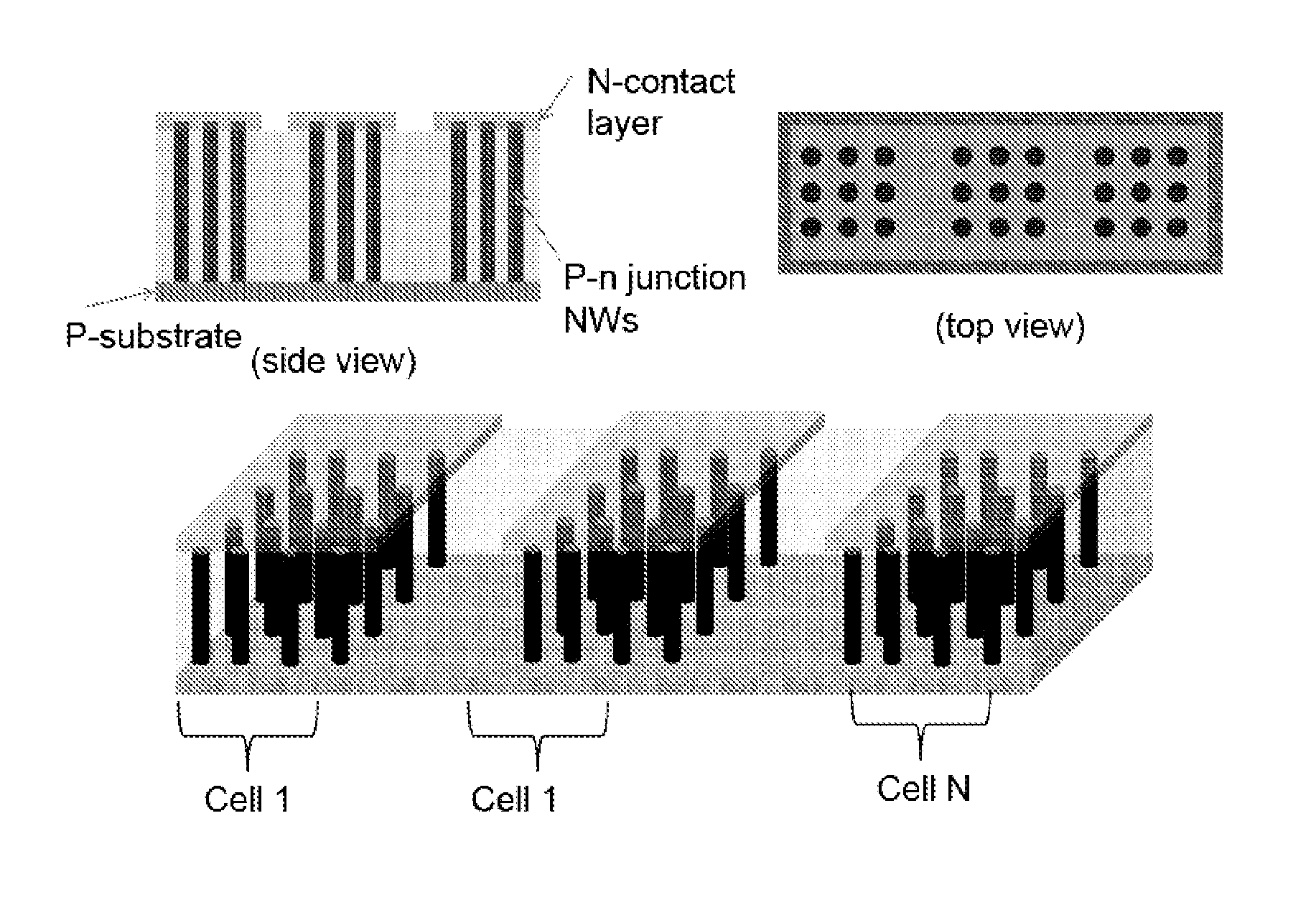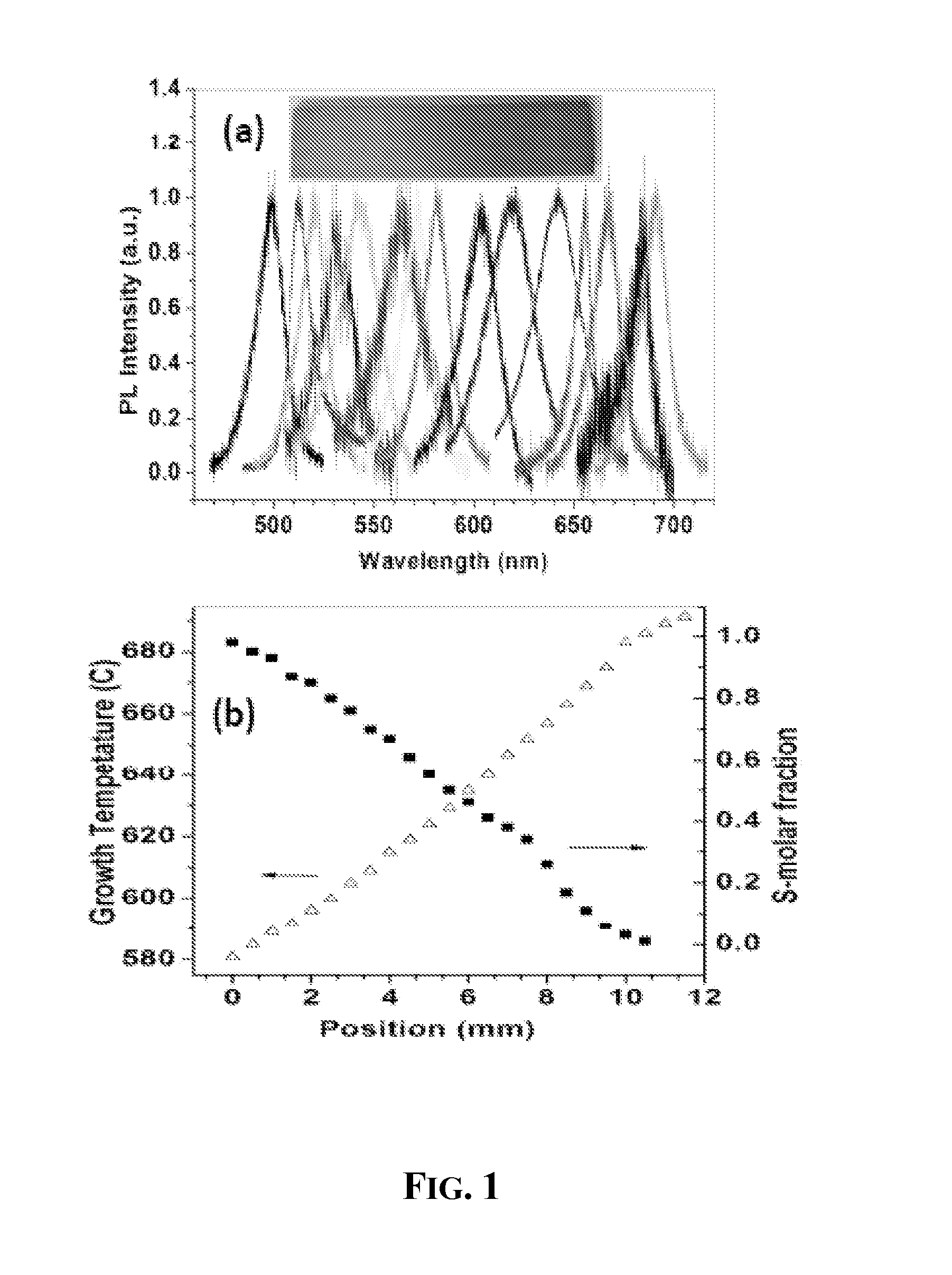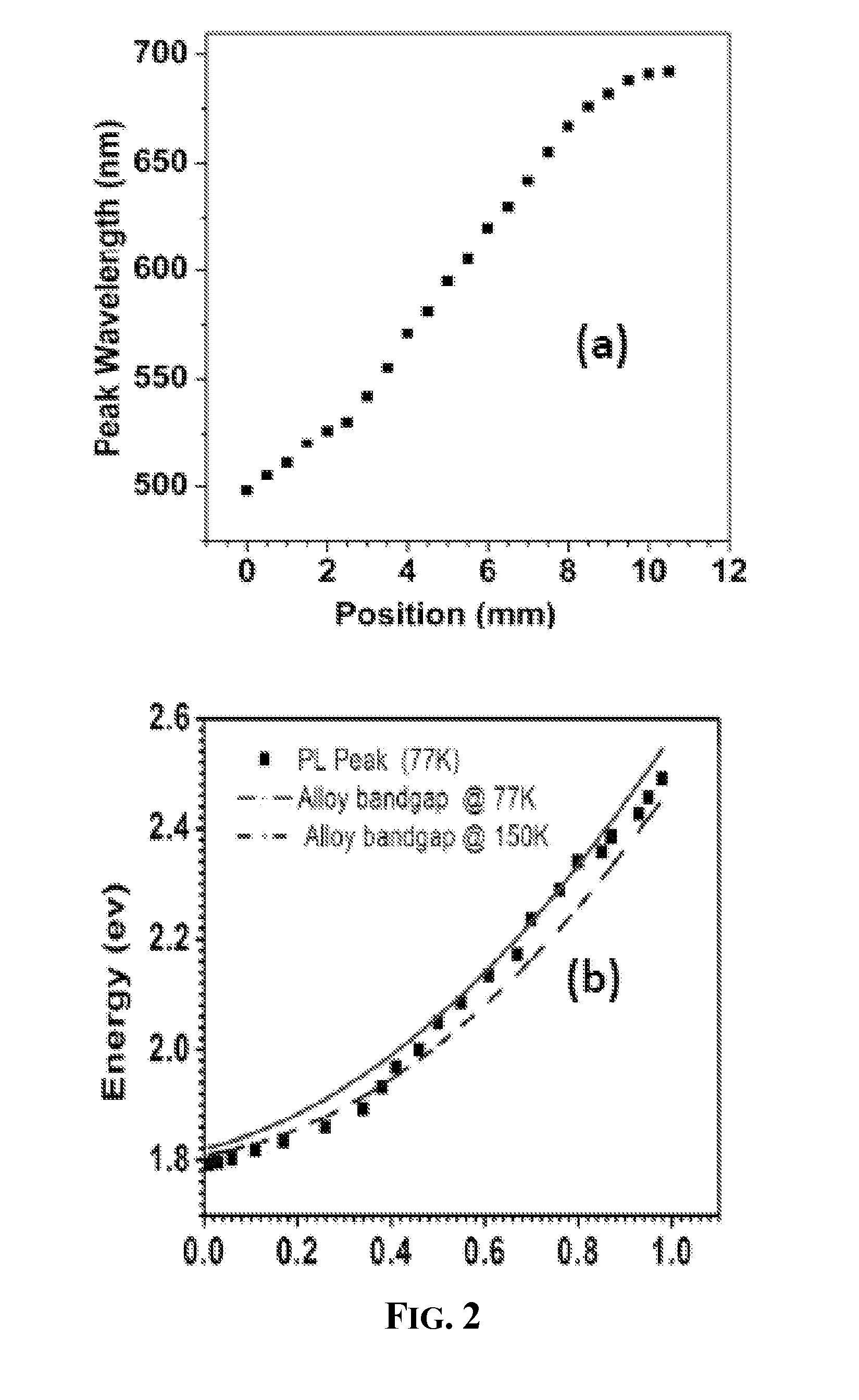Laterally Varying II-VI Alloys and Uses Thereof
a technology of iivi alloy and iivi, which is applied in the direction of non-metal conductors, conductors, semiconductor lasers, etc., can solve the problems of limited lattice constant mismatch, large mismatch of materials, and severe limitations in the method of achieving wavelength variability
- Summary
- Abstract
- Description
- Claims
- Application Information
AI Technical Summary
Benefits of technology
Problems solved by technology
Method used
Image
Examples
example 1
Growth of CdSxSe1-x Alloy Nanowires
[0132]To demonstrate such widely-spatially-tunable lasing, we chose the ternary alloy CdSxSe1-x (CdSSe) in the full composition range between CdS (x=1, bandgap 2.44 eV) and CdSe (x=0, bandgap 1.72 eV), because they are two important compound semiconductors that are of great interest for their emission in the visible wavelength range and have been investigated for their 1D nanostructures and alloys recently (see, Pan et al., J. Am. Chem. Soc. 127, 15692-1569 (2005); Pan et al., Nanotech. 17, 1083-1086 (2006); Agarwal et al., Nano Lett. 5, 917-920 (2005); Yu et al., J. Am. Chem. Soc. 125, 16168-16169 (2003); Barrelet et al., Nano Lett. 4, 1981-1985 (2004); Ma et al., Nano Lett. 7, 3300-3304 (2007)). For example, CdSSe alloy nanowires with several compositions were grown by changing the ratio of the source powders (CdS and CdSe) and / or the growth temperature of the substrate (see, Pan, 2005, supra; and Pan, 2006, supra). To grow CdSSe nanowires in the...
example 2
Layer Characterization
[0134]1. Photoluminescence: The lasing characteristics of the CdSSe sample of Example 1 was studied using a pulsed (6 ns, 10 Hz), frequency-quadrupled Nd:YAG laser (Spectra Physics Quanta Ray, at 266 nm) as the pump source. The pump beam was focused by a 250 mm focal length lens to a spot size of about 300 μm on the sample at an incidence angle of about 43°. Luminescence from the sample was then collected by a Mitutoyo Objective lens (Plan APO, SL, 50×), placed normal to the sample. The collected light was directed to a 0.3 m spectrometer and detected with a liquid nitrogen cooled CCD detector. The spatial resolution and spectral resolution were estimated to be about 700 nm and 0.2 nm, respectively. For the low temperature measurement, the sample was placed in a microscope cryostat. Liquid nitrogen was used to cool the samples to 77 K. For both the room-temperature and the low-temperature measurements, the sample was scanned across the length of the substrate t...
example 3
Device Integration
[0139]The substrate of Example 1 can be integrated with electrical contacts according to at least the following methods, for example, to yield structures suitable for use as solar cells. A first integration method is illustrated in FIG. 7a. A catalyst is patterned to provide a lateral array of minicells (Cell 1, Cell 2 . . . Cell N) on the surface of an insulating substrate. The substrate can have dimensions, for example, of about 2-5 mm×20 mm or larger, where the minicells are laterally arranged along the long dimension (20 mm) of the substrate. The extent of each minicell can be selected to yield a given bandgap interval for each minicell. Nanowires can be deposited on the patterned insulating substrate according to the methods of Example 1, where the nanowires deposit on the portions of the substrate having a surface catalyst layer. In FIG. 7a, the mean bandgap of each minicell continuously increases from Cell 1 through Cell N (i.e., left to right). Finally, an ...
PUM
 Login to View More
Login to View More Abstract
Description
Claims
Application Information
 Login to View More
Login to View More - R&D
- Intellectual Property
- Life Sciences
- Materials
- Tech Scout
- Unparalleled Data Quality
- Higher Quality Content
- 60% Fewer Hallucinations
Browse by: Latest US Patents, China's latest patents, Technical Efficacy Thesaurus, Application Domain, Technology Topic, Popular Technical Reports.
© 2025 PatSnap. All rights reserved.Legal|Privacy policy|Modern Slavery Act Transparency Statement|Sitemap|About US| Contact US: help@patsnap.com



